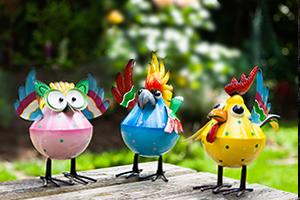Most businesses have been urged to conduct a carbon footprint review to gauge just how much carbon has been used producing their product. In conducting this exercise, even down to calculating the carbon used by employees getting to work, we realised our product absorbed carbon during production thereby offsetting the inputs used. We decided to measure this carbon absorption to see if it was significant.
We grow the plants on the nursery for 3 - 5 years so the carbon sequestered is cumulative the older the plants get. The plants are grown in 1 litre pots in the first year, 3 litre pots in the second year and 7.5 litre pots in the third year. We analysed the carbon of several varieties in all pot sizes both in shoots and roots and also cut down two 17 year old stock plants. We could not measure the carbon of the roots in these so estimated the root carbon content by ratio based on the potted plants.
We found that 1 year old plants absorbed 0.08 Kg of CO2 in this first year which increased to 0.21 Kg in the second year and 1.01 in the third. A 17 year old Crytomeria absorbed 315 Kg of CO2 in total or 18.5 Kg per year.
These amounts of carbon may not be ground breaking in isolation but multiplied by several plants in each garden and then by all the gardens throughout the land, a considerable carbon accumulation could be accrued.
roger@goldengrovenursery.co.uk
So, after planting in container, park or garden we calculate the plants will become carbon positive in the first or second year after final planting and then continue to absorb carbon throughout their life. Providing a canopy of plants is maintained by replanting when needed, a garden can and will have a continual store of carbon thus contributing to the overall effort to establish net zero.
Golden Grove Nursery Ltd



